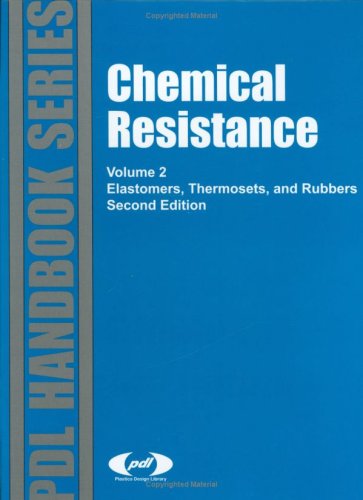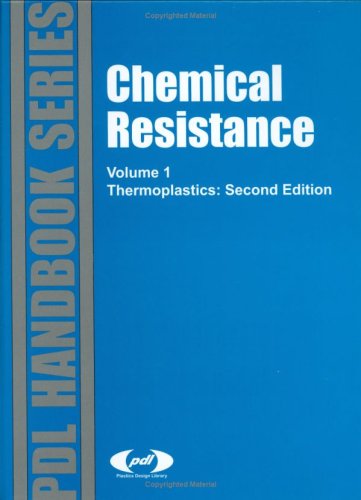Plastics Design Library
5 total works
Effect of Temperature and Other Factors on Plastics and Elastomers
by Pdl Staff
Published 1 December 1991
The Effect of Creep and Other Time Related Factors on Plastics and Elastomers
by Pdl Staff
Published 1 December 1991
What is the minimum amount of materials needed to meet your performance requirements? How much will the dimensions of a part change when loaded for a specified time at a given temperature? Engineers and designers will find the answers to these important questions in The Effect of Creep and Other Time Related Factors on Plastics. This is the only single reference that shows the effect of creep and time.
A databank of material constants used in engineering design equations substituting time/temperature dependent apparent modulus for elastic modulus in standard engineering equations will allow prediction of the effects of creep and stress relaxation.
A databank of material constants used in engineering design equations substituting time/temperature dependent apparent modulus for elastic modulus in standard engineering equations will allow prediction of the effects of creep and stress relaxation.
The Chemical Resistance series is the world's largest compilation of chemical resistance data that explains the effect of thousands of reagents, the environment and other exposure media on the properties and characteristics of thermoplastics.
Volume II covers 65 generic families of thermoplastic elastomers, thermosets and rubbers, as well as alloys and many new materials. More than 3,000 reagents, both common and exotic, comprise the exposure media.
Extensive data is given for exposure conditions and results of exposure. All data are presented in a tabular format. In addition to chapters arranged by generic material, materials selection is simplified by a section that sorts the data by reagent name and ranks every material at two temperature levels. Detailed permeability data is also included.
Exposure environments and material are indexed by Chemical Abstract Service (CAS) registry number and by trade name of the material.
Volume II covers 65 generic families of thermoplastic elastomers, thermosets and rubbers, as well as alloys and many new materials. More than 3,000 reagents, both common and exotic, comprise the exposure media.
Extensive data is given for exposure conditions and results of exposure. All data are presented in a tabular format. In addition to chapters arranged by generic material, materials selection is simplified by a section that sorts the data by reagent name and ranks every material at two temperature levels. Detailed permeability data is also included.
Exposure environments and material are indexed by Chemical Abstract Service (CAS) registry number and by trade name of the material.
The Chemical Resistance series is the world's largest compilation of chemical resistance data that explains the effect of thousands of reagents, the environment and other exposure media on the properties and characteristics of thermoplastics.
Materials/Reagents: Volume 1 covers 91 generic families of thermoplastic materials, as well as alloys and many new materials. More than 4,500 reagents, both common and exotic, comprise the exposure media.
Data: Extensive data are given for exposure conditions and results of exposure. All data are presented in tabular format. In addition to chapters arranged by generic material, materials selection is simplified by a section that sorts the data by reagent name and ranks every material at two temperature levels. Exposure environments and materials are indexed by Chemical Abstract Service (CAS) registry number and trade name of the material.
Materials/Reagents: Volume 1 covers 91 generic families of thermoplastic materials, as well as alloys and many new materials. More than 4,500 reagents, both common and exotic, comprise the exposure media.
Data: Extensive data are given for exposure conditions and results of exposure. All data are presented in tabular format. In addition to chapters arranged by generic material, materials selection is simplified by a section that sorts the data by reagent name and ranks every material at two temperature levels. Exposure environments and materials are indexed by Chemical Abstract Service (CAS) registry number and trade name of the material.
A hands-on guide to choosing and using old and new technologies for joining plastics and elastomers. Includes detailed discussions of over 25 techniques used to join plastics to themselves and to other materials.



